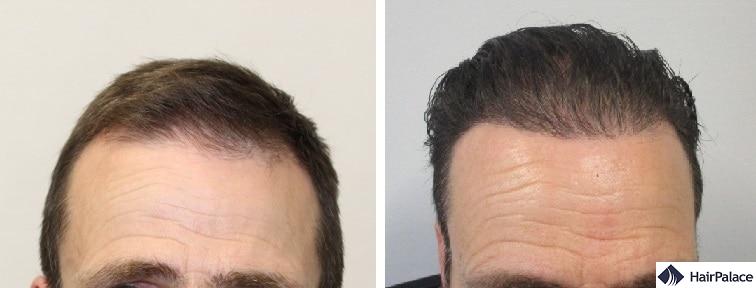A Small Procedure with a Great Result – Andrew’s Hair Transplant Surgery
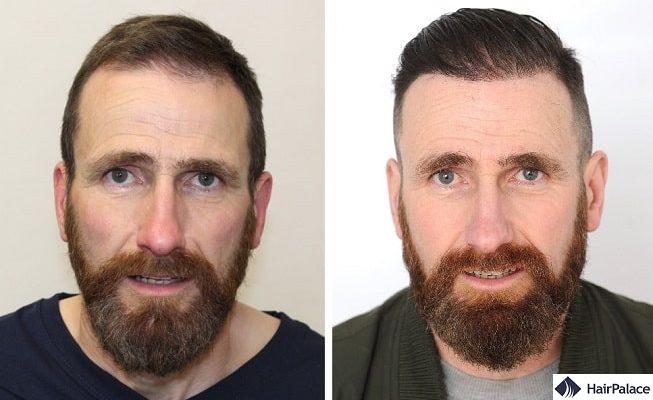
Andrew stopped by our clinic for a personal consultation on the 13th of February 2018 while he was visiting Budapest.
And what happens during the consultations?
First and foremost, we learn more about your unique needs and the goals you’d like to achieve with the hair transplant.
Then we take a look at what we have at hand and thoroughly examine the scalp and the density of the hair both on the donor area and at the top.
Then we move on to discuss the specific details, the post-op instructions and prepare the treatment plan and quote.
Getting back to Andrew, he explained to us that his hair loss progressed slowly, and his front thinned out moderately over a couple of years:
To resolve his issues, he was looking for the best hair transplant procedure in town.
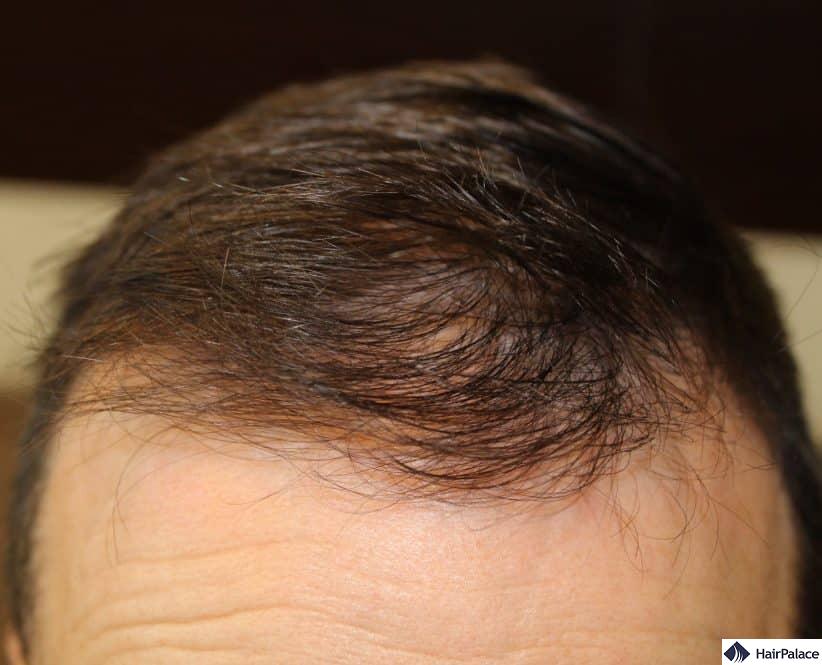
During the examination, we found that Andrew needed around 2-3000 hairs.
This number would allow a small correction at the hairline and to even out the density at the front.
After discussing his hair transplant procedure step by step, Andrew needed time to see how he could fit the surgery into his schedule.
He got back to us later in April to make the arrangements, and he booked his surgery for the 21st of May 2018.
Andrew’s FUE hair transplant procedure
Before we start the hair transplant procedure for men, we always go through the details and cut the hair short.
Then, in the first part of the procedure, we extract the hairs from the donor area. For this, the patient lies on his stomach mainly, so the surgeon can access the back and the sides of the head.
After the lunch break, we finalize the hairline if needed and/or discuss the distribution once again. Then the surgeon moves on to implanting the previously extracted hairs.
In Andrew’s case, the doctor proposed two different numbers originally – a minimum and a maximum.
As the transplantation is carried out with short hair, under a magnifying glass the surgeons see the density much more precisely.
Besides, the hairline is finalised on the day too. A slight difference in the shape or the position of the hairline can easily add or take away 2-500 hairs.
Thus the doctors can determine the number of hairs the most accurately on the day of the surgery and they implant as many hairs as needed to fit the patients’ unique needs.
For Andrew, the number of implanted hairs came to 2777:
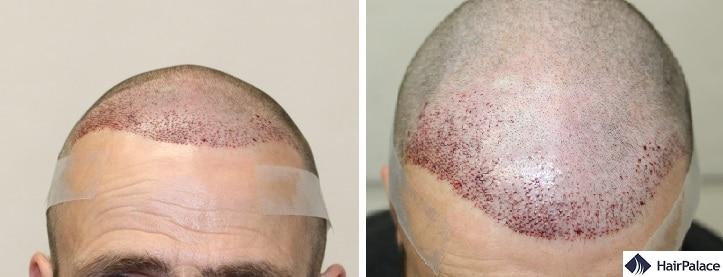
The 1st post-op week
In the first couple of weeks after the surgery patients have to pay special attention to the implanted area.
During the first week the tiny wounds are healing up, so it is important to prevent infections.
This is why patients have to take antibiotics and use a sterile saline solution religiously in this period.
Usually, there is some redness noticeable due to the thousands of pinpricks the hair transplant involves.
Moreover, in the first couple of days, patients might also experience some swelling.
Though it can be bothersome if it occurs at the forehead, around the eyes, it is only caused by the lidocaine used to numb the surgery sites.
Here are Andrew’s 1st-week check-up photos:
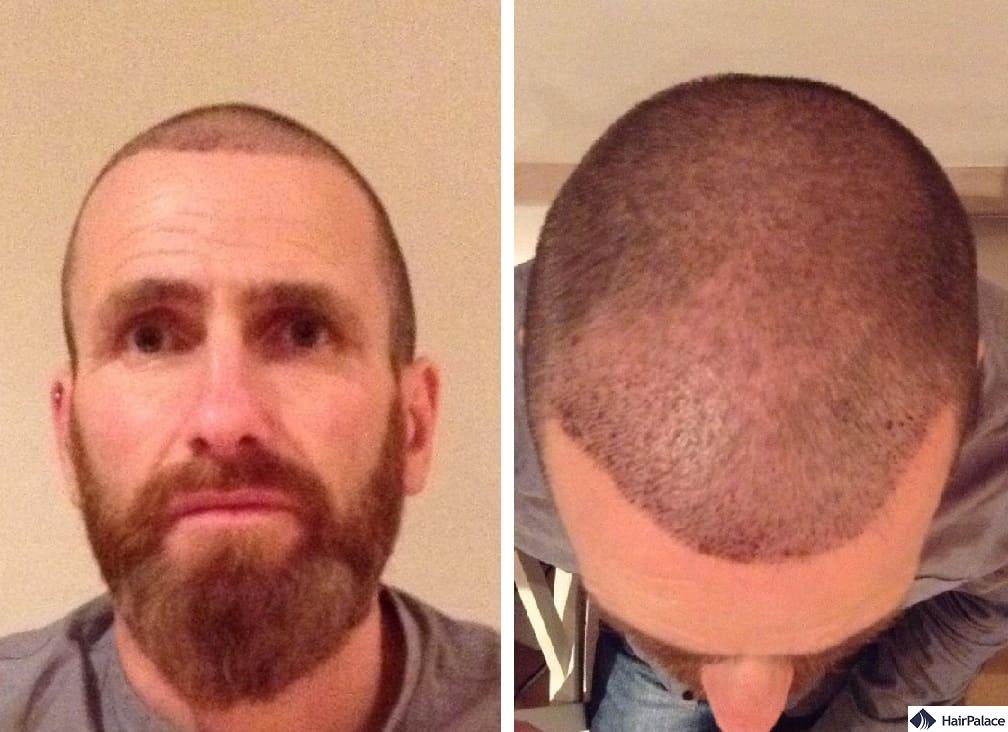
As we can see, there were a few scabs, but there was not much redness and no swelling visible.
How much redness and swelling one experiences after the surgery greatly depends on the sensitivity of the skin. However, it is not the only determining factor.
Transplanting the 2777 hairs was a relatively small surgery. Compared to larger, two-day sessions it meant fewer pinpricks on a smaller area and required less medication.
And as it had a lower impact on the scalp, it resulted in less visible signs too.
3 weeks – 3 months after the hair transplant
During the 2nd and 3rd weeks, patients have to soak and massage the scalp to get the crusts off.
This must be done very gently so the hairs stay in place.
And while the scalp has to clear up, seeing some redness is completely normal.
Let’s see how Andrew’s implanted area looked 3 weeks post-op:
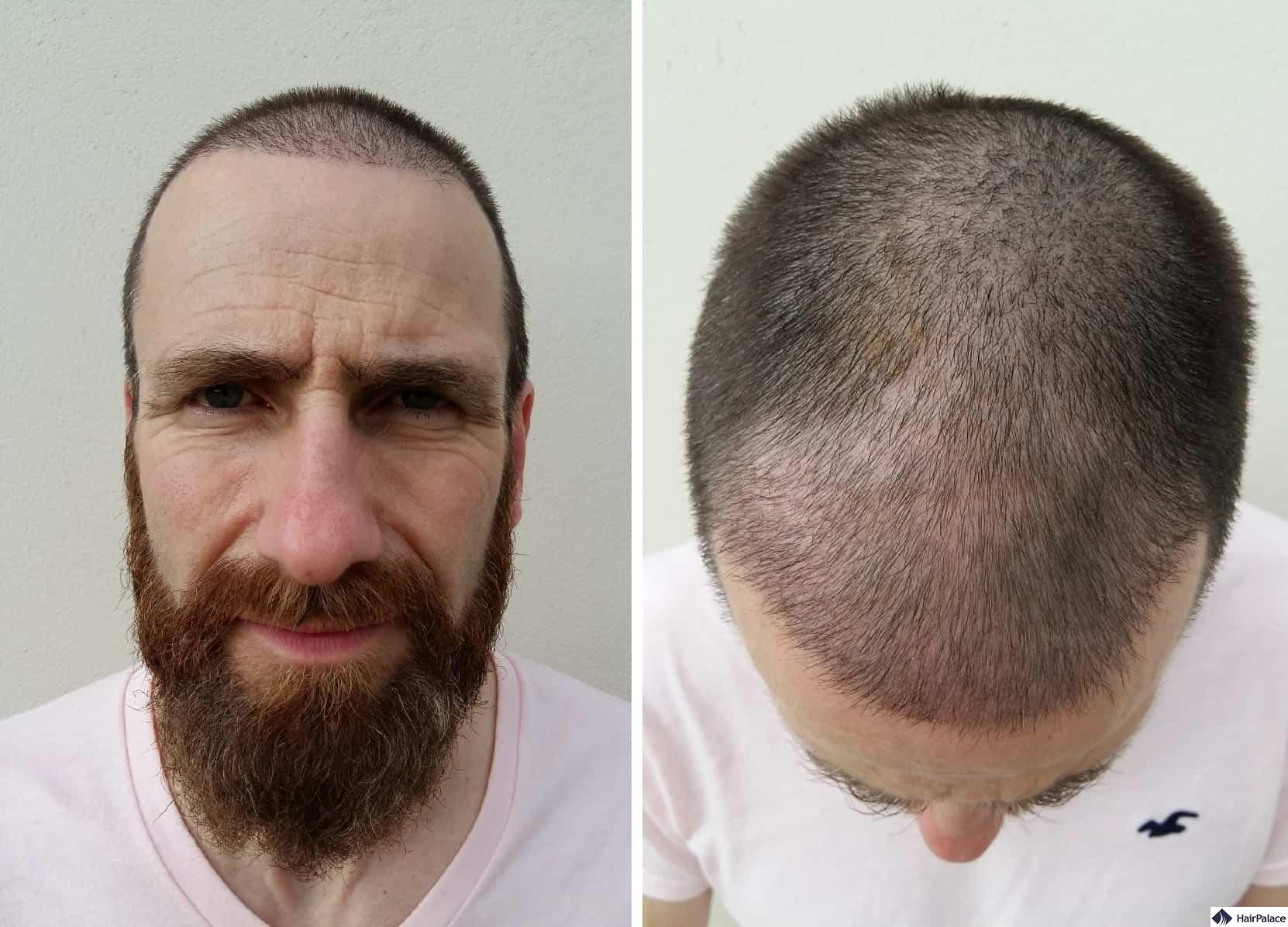
We can see that the implanted hairs were nicely in place and the scalp was free of scabs.
The small amount of redness he had almost completely disappeared too.
Overall we can say that the end of the 3rd post-op week is a turning point.
From then on patients may start exercising, they can put on a hat and they can use regular shampoo again.
But more importantly, this is the time when the transplanted hairs start to fall out.
The replacement restarts the lifecycle of the transplanted roots. This means that the hair strands fall out and the roots enter a dormant period before they start growing new hairs again.
As a result, usually, the recipient area looks almost the same as it did before the hair transplant.
But since each root spends a different amount of time in the dormant state, a couple of new hairs might be already out at the 3 months’ check-up:
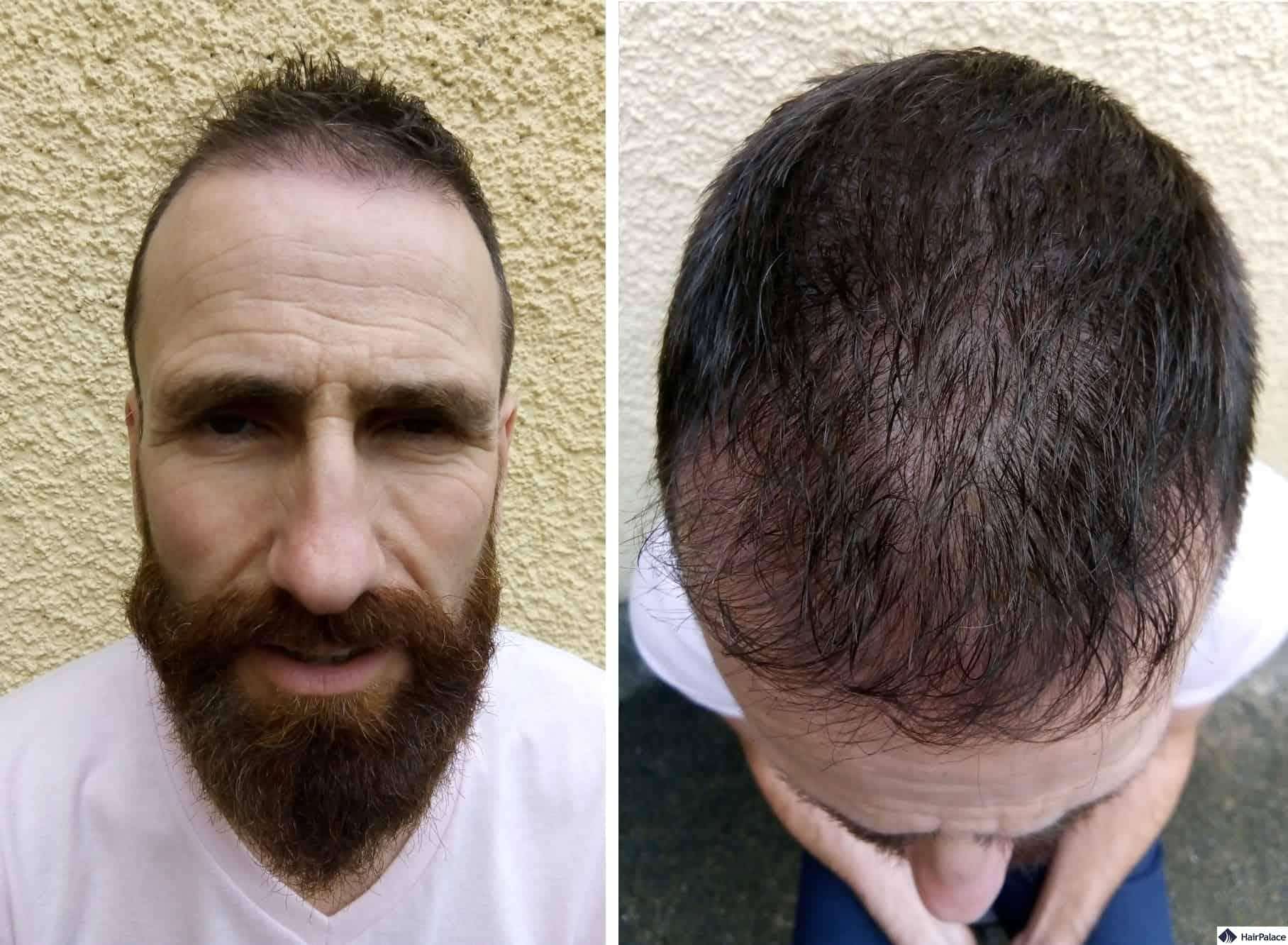
6 months after the surgery
There is significant progress between the 3rd and the 6th post-op month.
This is the period when the change starts to show as around 50% of the transplanted hairs grow out.
The growth process is different for everyone – the age, lifestyle, any skin issues affecting the scalp can influence how quick the progress is.
Some experience a bit slower change, while in other cases 60% of the hairs are out by the 6 months’ mark.
Moreover, just as with the final result later on, many factors affect the impact of this partial result, such as:
- the size of the implanted area;
- the number of implanted hairs;
- the implanted density;
- the characteristics of the hairs – colour, texture, the thickness of the strands;
- whether or not the hair loss progressed.
In Andrew’s case, the implanted area progressed true to form.
Around half of the implanted hairs were visible at the 6 months’ check-up providing a subtle yet superb change already:
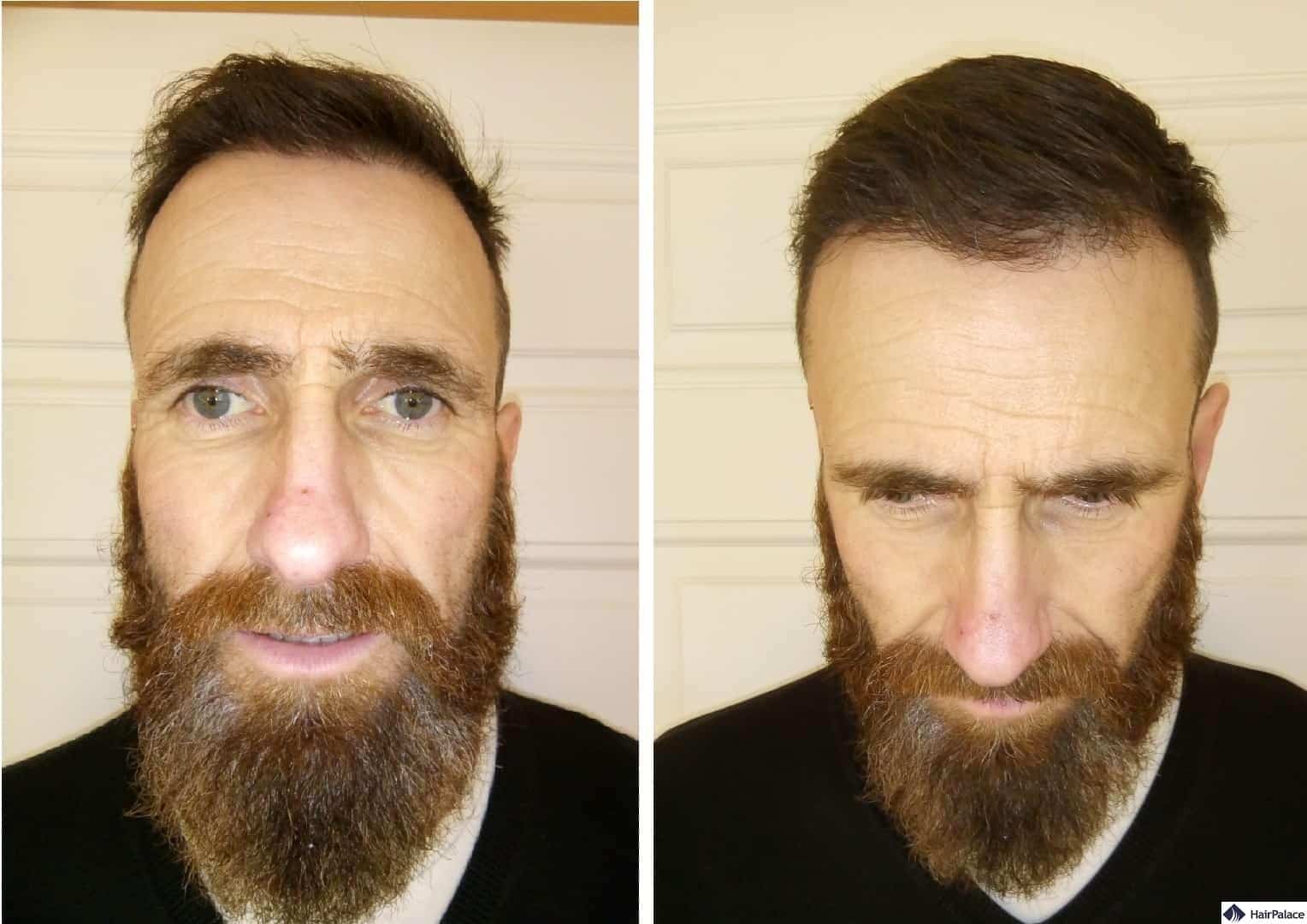
A year after the surgery
Patients have to wait 12-15 months to see the full result.
For his final check-up, Andrew met us in Dublin, and we were glad to learn that he is happy with the result of his hair transplant.
Similarly to a consultation, the surgeon in attendance closely examined his hair and scalp.
But the doctor also revised Andrew’s previous photos to better assess the achieved result.
She examined the pictures we took before the surgery, as well as the ones we took at the end of the surgery day to see the implanted hairs precisely.
The doctor could not only confirm the success of the surgery but also found that should it become necessary later on, a second procedure could be carried out.
Let’s take a close look at the great result Andrew achieved:
